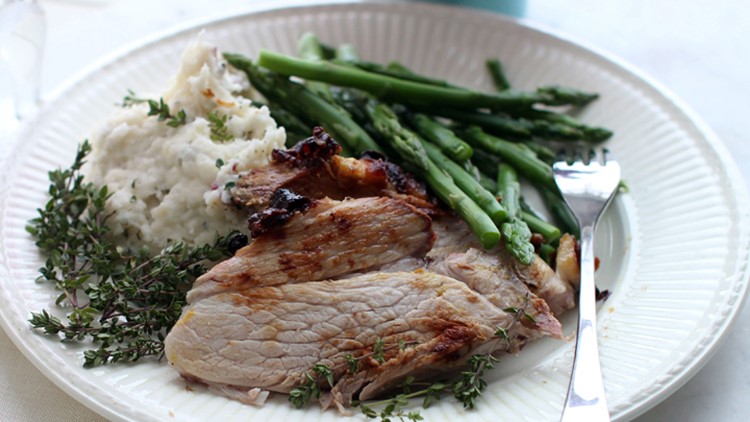Easter is Sunday, and with it comes celebrations with friends and family.
Whether you’re cooking a ham, serving brunch or cooking eggs for a hunt, these events bring together groups of people to enjoy considerable amounts of delicious and often traditional foods. But if proper food safety steps aren’t taken, your celebration could turn into a disaster.
The Four Basic Steps to Food Safety
Having the right kitchen equipment will make your life easier when practicing four food safety steps: clean, separate, cook and chill.
- Clean hands frequently with warm soapy water, especially before and after handling raw food; thoroughly wash cutting boards, countertops and utensils with hot soapy water.
- Use separate cutting boards for raw and ready-to-eat foods. For example, use one cutting board for produce and a different one for raw meat and poultry. That way, you are preventing cross contamination between raw and ready-to-eat-food.
- Always use a food thermometer when cooking. Measure the internal temperature of meats, poultry, and seafood and egg products before serving to make sure they are ready to eat. The USDA Safe Minimum Internal Temperatures chart will help you determine if your food is safe to eat:
- Beef, pork, veal and lamb – steaks, chops or roasts: 145°F and allow to rest for at least three minutes (including fresh or smoked ham)
- Ground meats: 160°F
- Fully cooked ham (to reheat): Reheat cooked hams packaged in USDA-inspected plants to 140°F and all others to 165°F
- All poultry (breasts, whole birds and stuffing, legs, thighs, wings and ground poultry): 165°F
- Egg dishes: 160°F
- Fish: 145°F
- Leftovers and casseroles: 165°F
- Perishable food should not be left out at room temperature for more than two hours. At celebration gatherings, make sure your cold food is kept cold (40°F or below) by serving it in smaller portions and refilling, or by putting the food containers over ice. Hot food should be kept hot (140°F or above); you can keep the food warm by serving in warming trays or using a slow cooker.
Things to Know about Proper Ham Preparation
Whether you are cooking a raw ham or preparing a ready-to eat ham product, follow these steps for a ham that is cooked to perfection.
- Ham that is not ready-to-eat but has the appearance of ready-to-eat products will bear a statement on the label indicating the product needs cooking.
- Ham that requires cooking before consumption or fresh, raw ham must reach an internal temperature of 145°F (with a three-minute rest time). Set the oven no lower than 325°F.
- Cooked canned ham and cooked vacuum-packaged ham, both from federally inspected plants, can be eaten right out of the package. All of these along with spiral-cut cooked ham are safe to eat cold or can be warmed to an internal temperature of 145°F, as they are already fully cooked. For cooked hams that have been repackaged in any other location outside the processing plant, heat to an internal temperature of 165°F, measured with a food thermometer, before you serve it.
For more background information on the kinds, storage and cooking times for ham, visit Ham and Food safety.
Egg Safety
Did you know that Salmonella bacteria can be found on both the outside and inside of eggs that appear to be normal? The larger the number of Salmonella present in the egg, the more likely the egg is to cause illness.
To enjoy eggs without the risk of getting sick:
- Store eggs in the refrigerator.
- Discard any cracked or dirty eggs.
- Be sure to wash hands and any surfaces (counter tops, utensils or dishes) after contact with raw eggs.
- Cook eggs thoroughly until both the yolk and white are firm. Cooking reduces the number of bacteria in an egg. Lightly cooked egg whites and yolks have both caused outbreaks of Salmonellainfections.
- Recipes containing eggs mixed with other foods should be cooked to an internal temperature of 160ºF.
- Eat eggs promptly. Don’t keep them warm or at room temperature for more than two hours. DO NOT EAT hard-boiled eggs used for an egg hunt or as decorations if they have been at temperatures above 40ºF for more than two hours; discard them.
Content provided by the USDA



